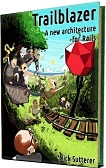README.markdown in roar-1.0.2 vs README.markdown in roar-1.0.3
- old
+ new
@@ -1,25 +1,21 @@
# ROAR
_Resource-Oriented Architectures in Ruby._
[](https://travis-ci.org/apotonick/roar)
+[](http://badge.fury.io/rb/roar)
+[](https://gitter.im/trailblazer/chat)
## Introduction
Roar is a framework for parsing and rendering REST documents. Nothing more.
Representers let you define your API document structure and semantics. They allow both rendering representations from your models _and_ parsing documents to update your Ruby objects. The bi-directional nature of representers make them interesting for both server and client usage.
Roar comes with built-in JSON, JSON-HAL, JSON-API and XML support. Its highly modular architecture provides features like coercion, hypermedia, HTTP transport, client caching and more.
Roar is completely framework-agnostic and loves being used in web kits like Rails, Webmachine, Sinatra, Padrino, etc. If you use Rails, consider [roar-rails](https://github.com/apotonick/roar-rails) for an enjoyable integration.
-
-<a href="https://leanpub.com/trailblazer">
-
-</a>
-
-Roar is part of the [Trailblazer project](https://github.com/apotonick/trailblazer). Please [buy the book](https://leanpub.com/trailblazer) to support the development. Several chapters will be dedicated to Roar, its integration into operations, hypermedia formats and client-side usage.
## Representable
Roar is just a thin layer on top of the [representable](https://github.com/apotonick/representable) gem. While Roar gives you a DSL and behaviour for creating hypermedia APIs, representable implements all the mapping functionality.